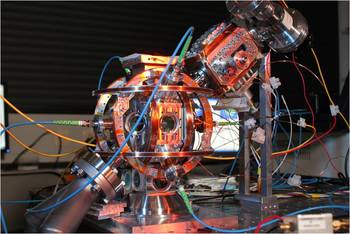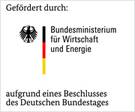Primus
In the PRIMUS experiment is set up in a drop capsule and utilizes an all-optical approach for BEC generation in microgravity. The key component is a far-off resonant, high-power fibre laser (1064 nm) to implement a crossed optical dipole trap for evaporative cooling of atomic ensembles. The system is equipped to cool two atomic species, rubidium and potassium.
Fast evaporation in this trap can be aided by spatially modulating the trapping beam position. This also provides the means to study quantum-gases in almost arbitrary time-averaged optical potentials, substantially different from the harmonic potentials commonly applied in most BEC experiments. For example, box-like potentials in microgravity will allow to study quantum gases of homogeneous density and undisturbed by gravity.

Related publications
C. Vogt et al.: Evaporative cooling from an optical dipole trap in microgravity, Phys. Rev. A 101, 013634 (2020)
S. Kulas et al.: Miniaturized lab system for future cold atom experiments in microgravity, Microgravity Science and Technology 29 37-48 2017
Contact
Dr. C. Vogt, M. Woltmann
Funding
The PRIMUS-III project is supported the German Space Agency (DLR) with funds provided by the Federal Ministry of Economic Affairs and Energy (BMWi) due to an enactment of the German Bundestag under Grant No. 50WM1642.




 "
"